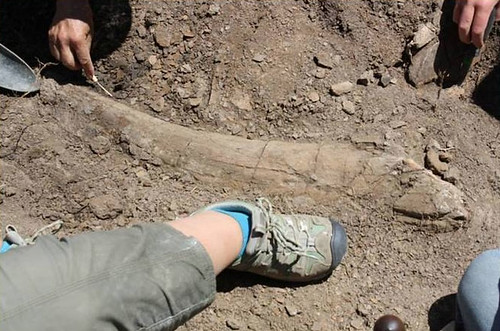
Paleontologist Barbara Beasley’s voice filled with excitement as she described a recent dinosaur find on the Thunder Basin National Grassland in northeastern Wyoming.
“This was a once-in-a-lifetime experience for our Passport in Time volunteers,” she said. “Mother Nature preserved and stored this treasure for more than 65 million years.”
Beasley led a group of 22 volunteers on a fossil excavation project at the Alkali Divide Paleontological Special Interest Area where volunteer Tom Ludwig found the nearly three-foot Triceratops horn.
The group was not expecting to find any large fossils at the site, so everyone brought only small bags to collect their findings. Called a micro-vertebrate accumulation by scientists, the site typically offers up fossils the size of a fist or smaller.
“This herbivorous dinosaur’s 31-inch brow horn is remarkably intact and very well preserved,” said Beasley. “All volunteers worked eagerly to completely unearth this paleo-prize.”
The plant-eating Triceratops – a skeletal mount has been on display at the Smithsonian Museum of Natural History since 1905 – may have been 30 feet long, with two large brow horns and a smaller horn on its snout. When this creature died 65 million years ago during the late Cretaceous, eastern Wyoming was a tropical environment.
“It’s very exciting…applying everything I’ve learned,” said Tirzah Abbott, a first-time dino-digger, paleontology geo-database technician and recent Geology graduate from Beloit College in Wisconsin. “I’m excited to be part of the excavation and preparation (of this fossil).”
Passport in Time is a Forest Service volunteer archaeology, paleontology, and historic preservation program. Through this program, students and volunteers get the opportunity to go in the field and work shoulder-to-shoulder with professional Forest Service archaeologists, paleontologists and historians on a wide variety of activities throughout the U.S.

